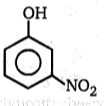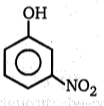An aldehyde on treatment with Zn/HCl yields:
(1) 1 alcohol
(2) 2 alcohol
(3) 3 alcohol
(4) none of these
एल्डिहाइड को Zn/HCl के साथ उपचारित करने पर देता है:
(1) 1 एल्कोहॉल
(2) 2 एल्कोहॉल
(3) 3 एल्कोहॉल
(4) इनमें से कोई नहीं
Pyroligneous acid contains:
(1) CH3COOH (10%), CH3OH (2.5%), CH3COCH3 (0.5%)
(2) C2H5OH (10%), CH3OH (2.5%), CH3COCH3 (0.5%)
(3) CH3COCH3 (10%), C2H5OH (2.5%), CH3OH (0.5%)
(4) none of the above
पाइरोलिग्नियस अम्ल में होता है:
(1) CH3COOH (10%), CH3OH (2.5%), CH3COCH3 (0.5%)
(2) C2H5OH (10%), CH3OH (2.5%), CH3COCH3 (0.5%)
(3) CH3COCH3 (10%), C2H5OH (2.5%), CH3OH (0.5%)
(4) इनमें से कोई भी नहीं
A liquid was mixed with ethanol and a drop of concentrated H2SO4 was added. A compound with a fruity smell was formed. The liquid was:
(1) HCHO
(2) CH3COCH3
(3) CH3COOH
(4) CH3OH
एक द्रव को एथेनॉल के साथ मिश्रित किया गया और H2SO4 की एक बूंद की को मिलाया गया। एक फल जैसी सुगंध वाले एक यौगिक का निर्माण हुआ। द्रव था:
(1) HCHO
(2) CH3COCH3
(3) CH3COOH
(4) CH3OH
(A) on heating isomerizes to (B). What is the structure of (B) ?
1. 
2. 
3. 
4. 
(A) को गर्म करने पर समावयवी (B) देता है। (B) की संरचना क्या है?
1. 
2. 
3. 
4. 
*Isomerisation - समावयवता
The reaction;
RCOOH RCH2OH is called:
(1) Corey House reaction
(2) Bonveault-Blanc reaction
(3) Clemmensen reduction
(4) none of the above
अभिक्रिया;
RCOOH RCH2OH को कहा जाता है:
(1) कोरी हाउस अभिक्रिया
(2) बूवो-ब्लांक अभिक्रिया
(3) क्लीमेन्सन अपचयन
(4) उपरोक्त में से कोई नहीं

(more volatile) (less volatile)
Product (A) of the above reaction is:
1. 
2. 
3. 
4. 

(अधिक वाष्पशील) (कम वाष्पशील)
उपरोक्त अभिक्रिया का उत्पाद (A) है:
1. 
2. 
3. 
4. 
Phenol can be converted into salicylic acid by
(1) Etard's reaction
(2) Kolbe's reaction
(3) Reimer-Tiemann reaction
(4) both (2) and (3)
फीनॉल को सैलिसिलिक अम्ल में किसके द्वारा परिवर्तित किया जा सकता है?
(1) ईटार्ड अभिक्रिया
(2) कोल्बे अभिक्रिया
(3) राइमर-टीमान अभिक्रिया
(4) (b) और (c) दोनों
The products of combustion of an aliphatic thiol (RSH) at 298K are:-
(1) CO2(l), H2O(g)andSO2(g)
(2) CO2(g), H2O(g)andSO2(g)
(3) CO2(l), H2O(l)andSO2(g)
(4) CO2(g), H2O(l)andSO2(l)
298 K ताप पर, एक एलिफैटिक थायोल (RSH) के दहन का उत्पाद हैं:-
(1) CO2(l), H2O(g) और SO2(g)
(2) CO2(g), H2O(g) और SO2(g)
(3) CO2(l), H2O(l) और SO2(g)
(4) CO2(g), H2O(l) और SO2(l)
What is formed when a primary alcohol undergoes catalytic dehydrogenation?
1. Aldehyde
2. Ketone
3. Alkene
4. Acid
जब एक प्राथमिक एल्कोहॉल, उत्प्रेरकीय डाइहाइड्रोजनीकरण से गुजरता है तो क्या निर्मित होता है?
(1) एल्डिहाइड
(2) कीटोन
(3) ऐल्कीन
(4) अम्ल
Consider the following alcohols,
(I)


The order of decreasing reactivities of these alcohols towards nucleophilic substitution with HBr is:-
1. III>I>IV>II
2. III>I>II>IV
3. I>III>IV>II
4. I>III>II>IV
निम्नलिखित एल्कोहॉल पर विचार कीजिए,
(I)


HBr के साथ नाभिकस्नेही प्रतिस्थापन के लिए इन एल्कोहॉल की घटती क्रियाशीलता का क्रम है:-
1. III>I>IV>II
2. III>I>II>IV
3. I>III>IV>II
4. I>III>II>IV








